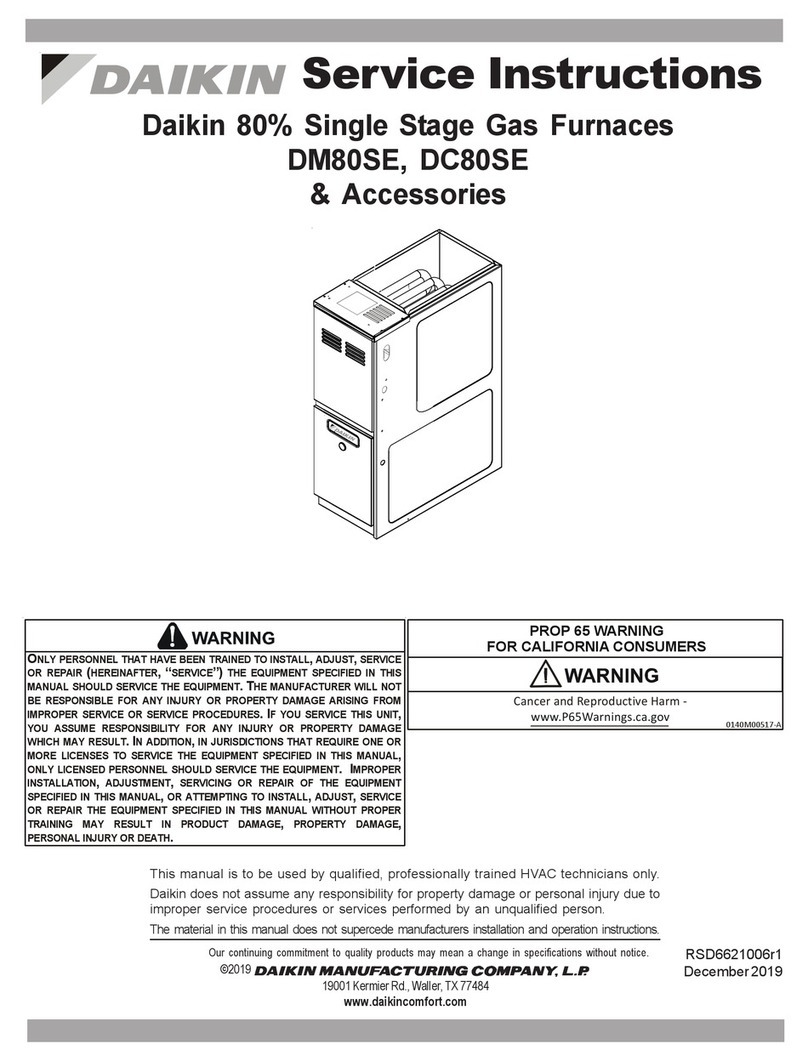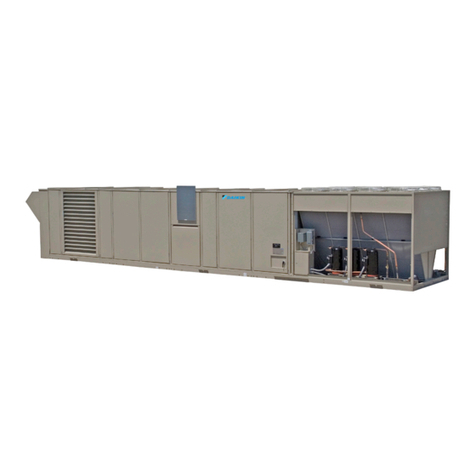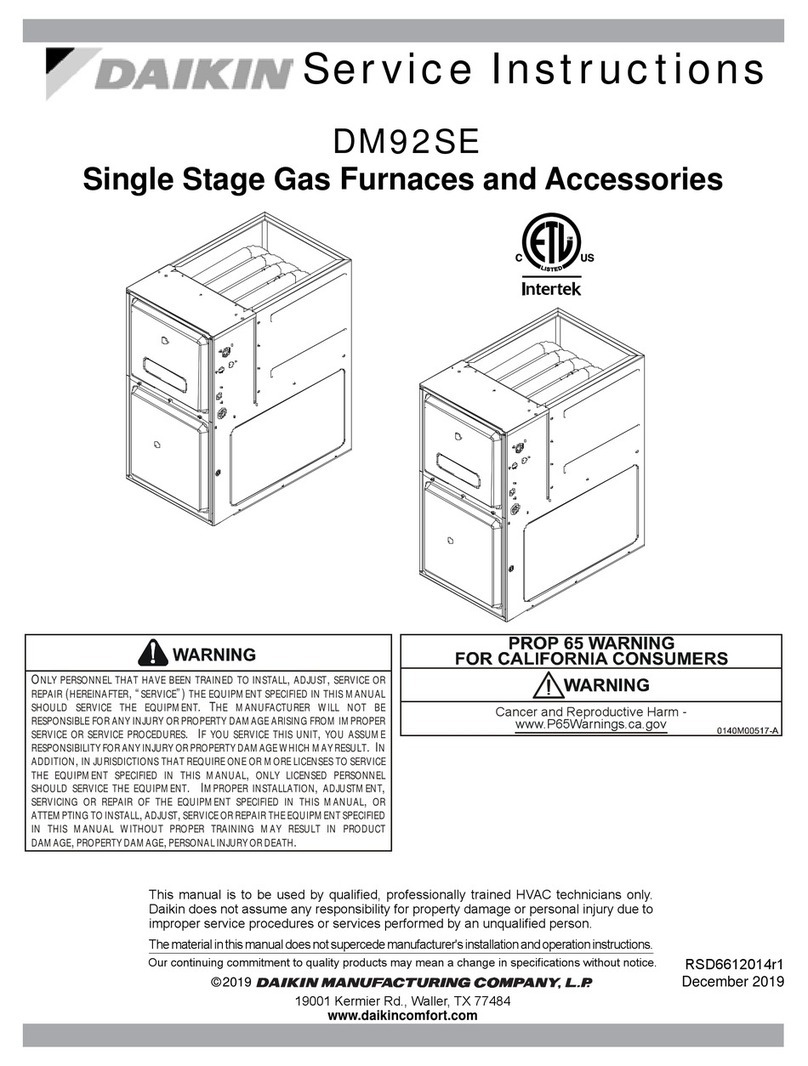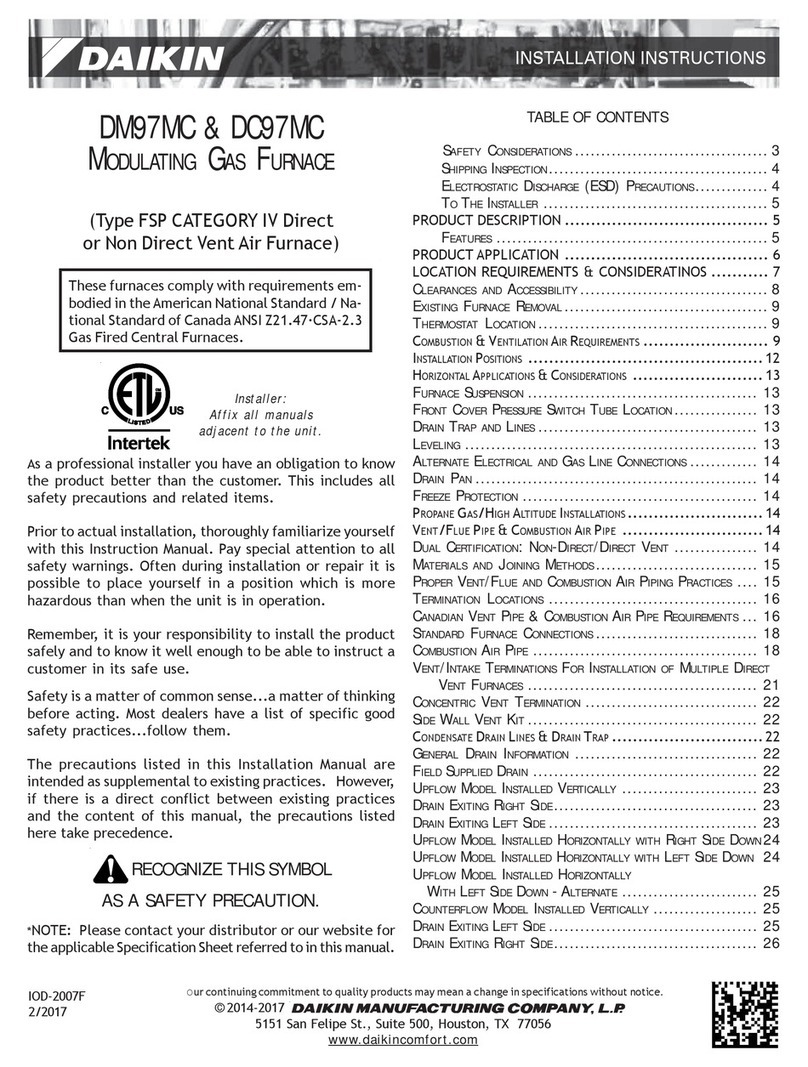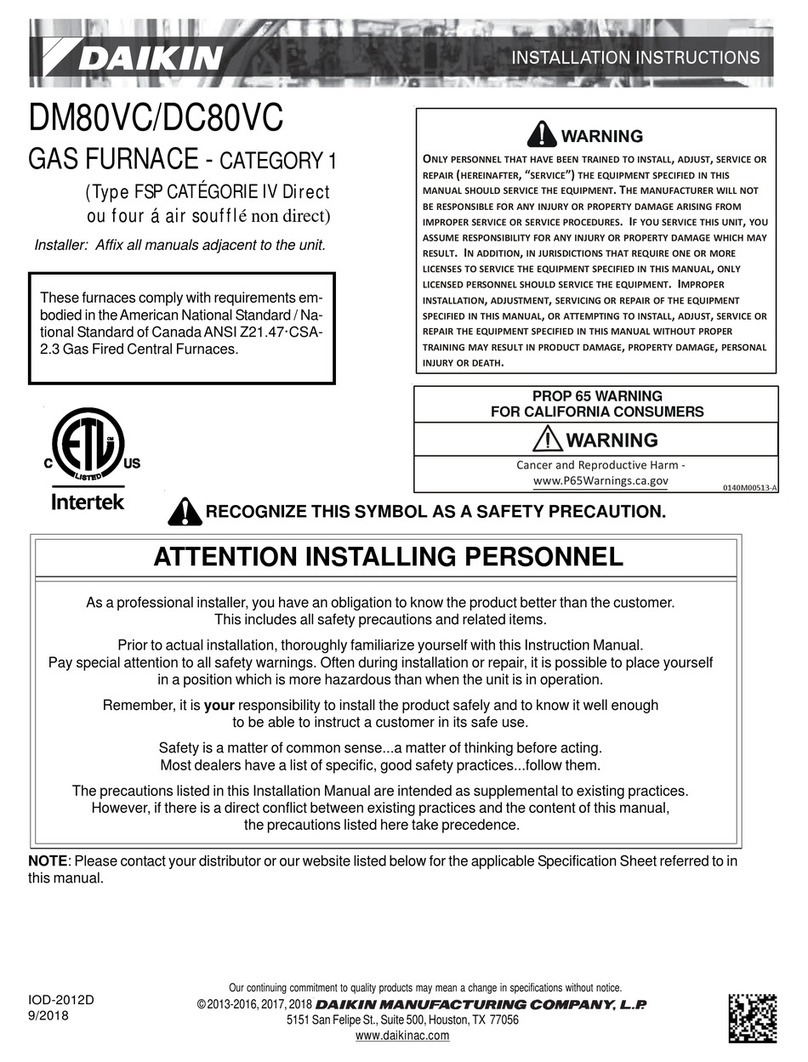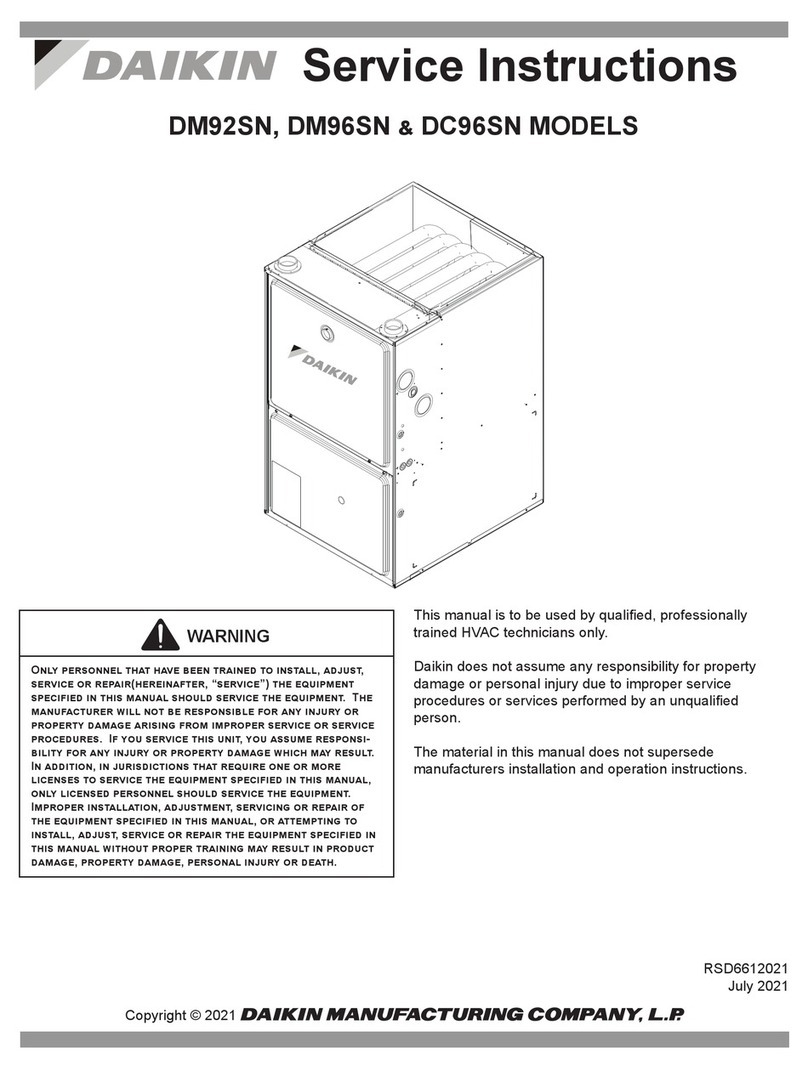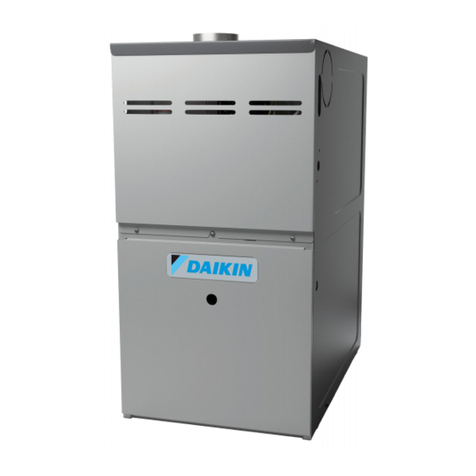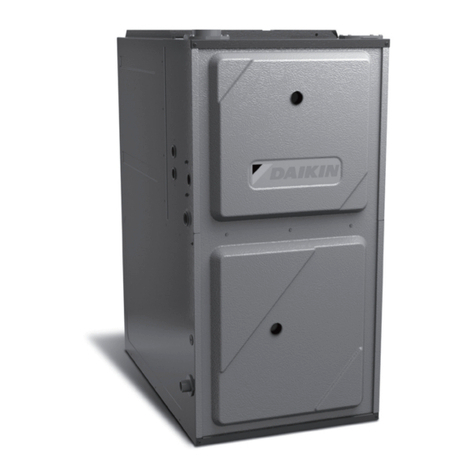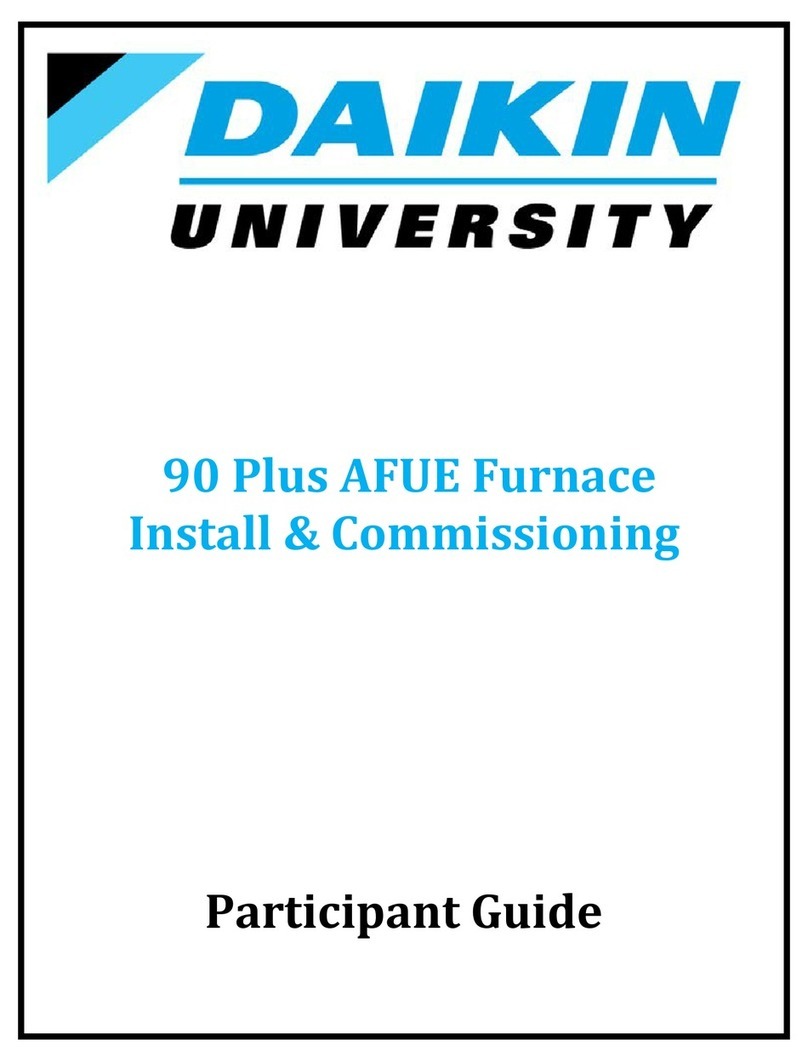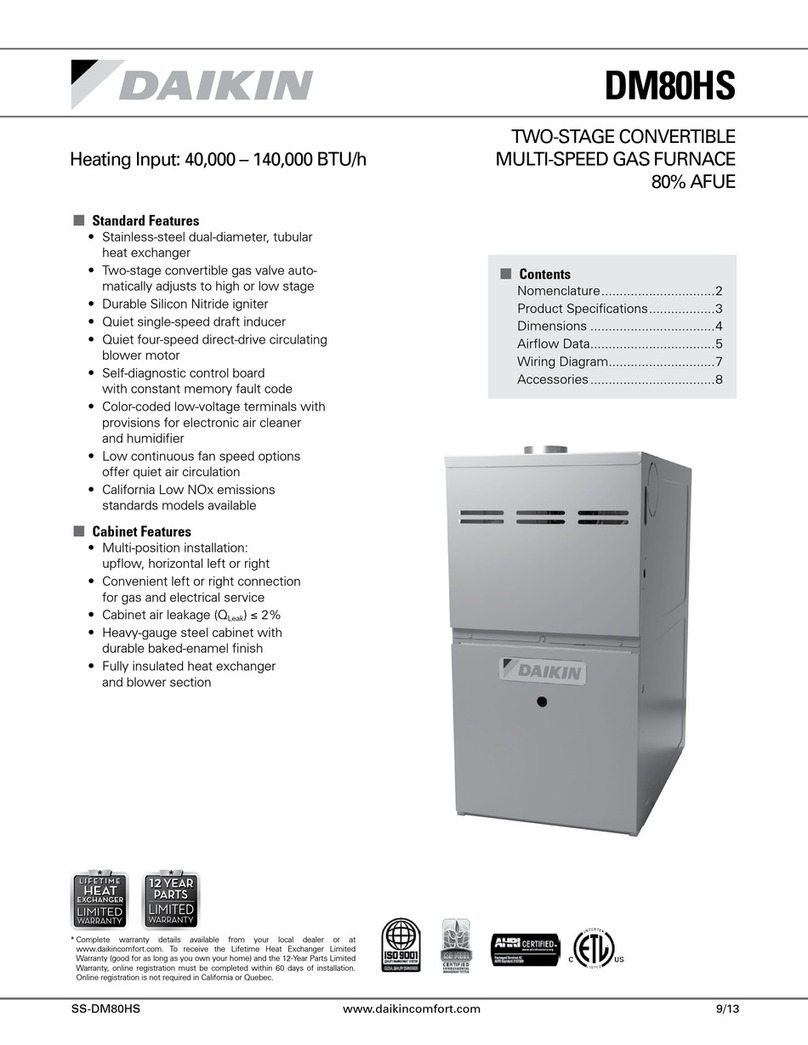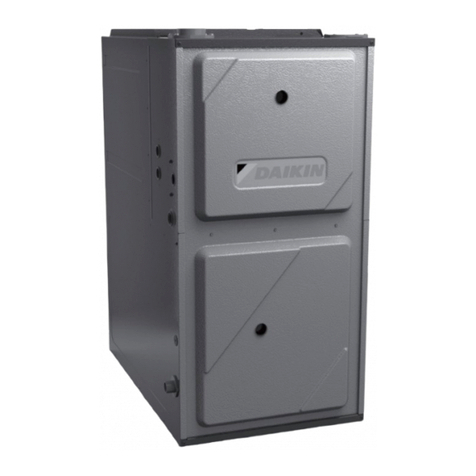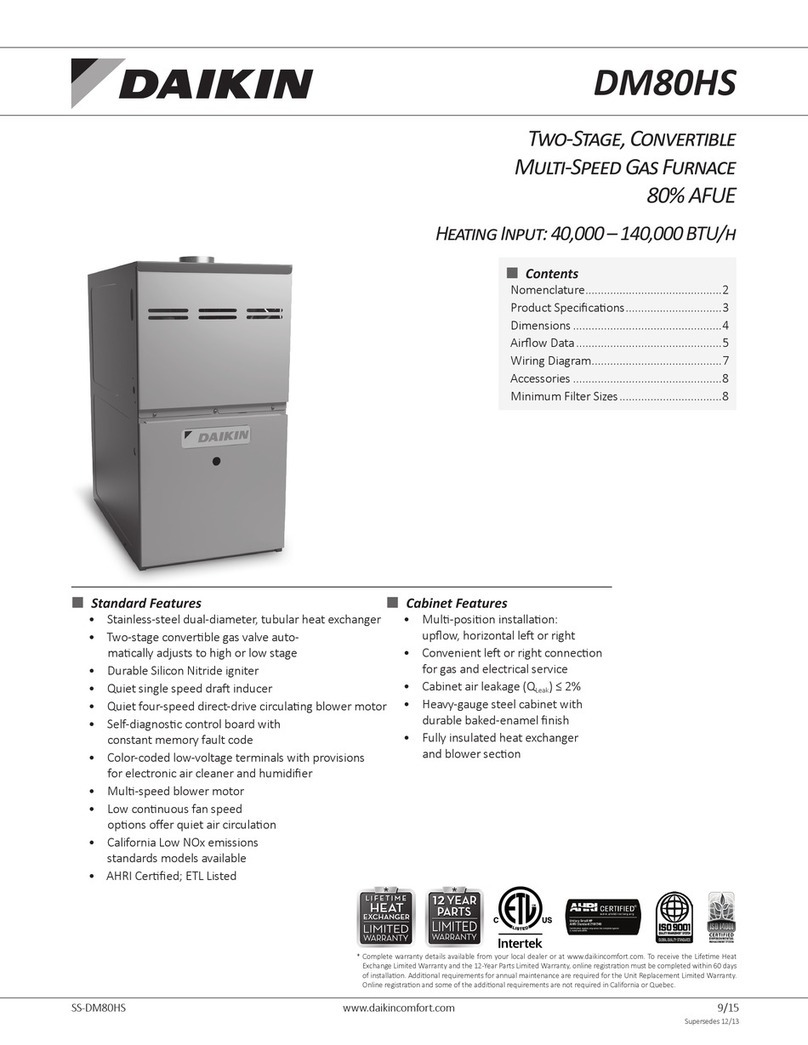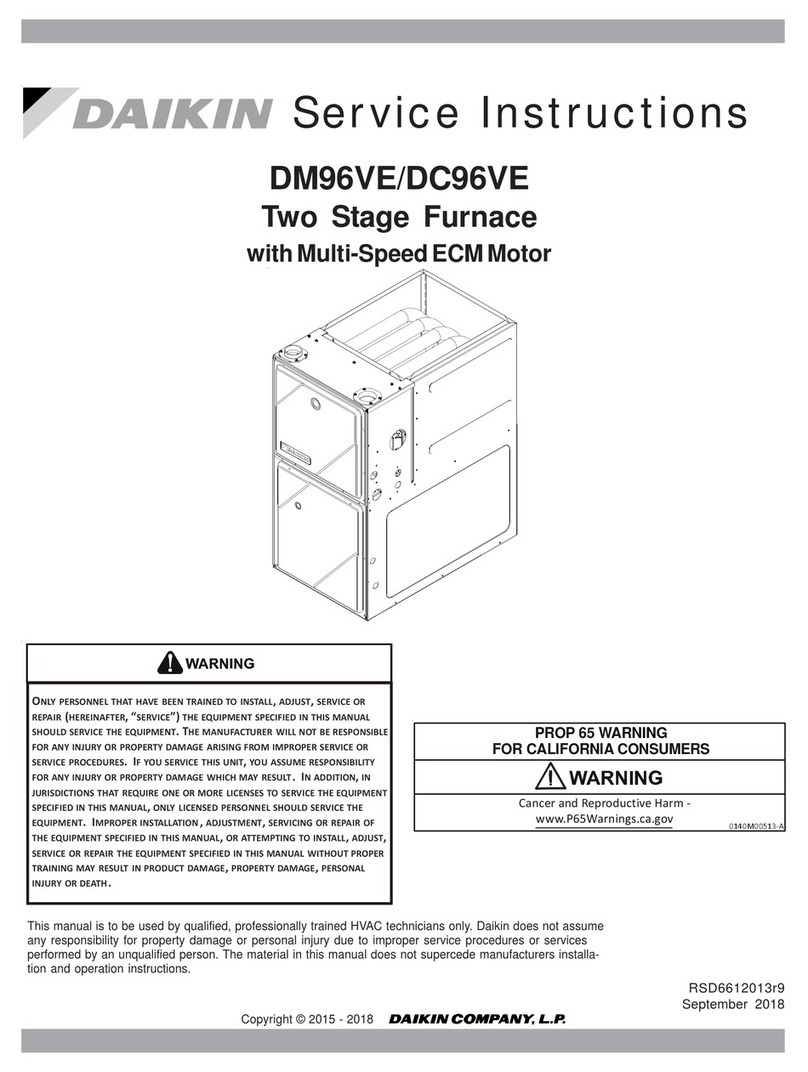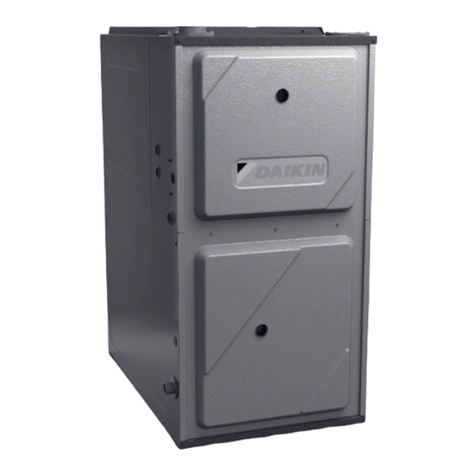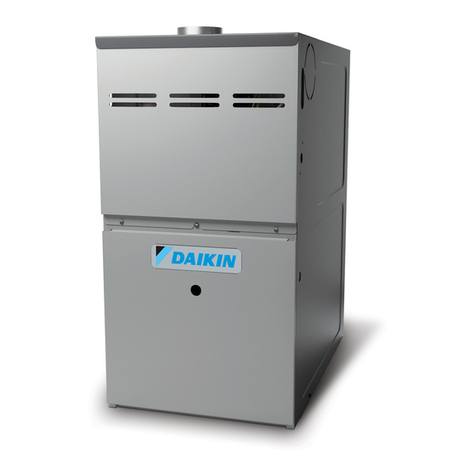
6
to determine if the piping system from furnace to
terminationcanbeaccomplishedwithintheguidelines
given. NOTE: The length of flue and/or combustion
air piping can be a limiting factor in the location of
the furnace.
• Locate the furnace so condensate flows downwards
to the drain. Do not locate the furnace or its
condensate drainage system in any area subject to
below freezing temperatures without proper freeze
protection. Refer to Condensate Drain Lines and Trap
for further details.
• Ensure adequate combustion air is available for the
furnace. Improper or insufficient combustion air can
exposebuildingoccupantstogascombustion products
that could include carbon monoxide. Refer to
Combustion and Ventilation Air Requirements.
• Set the furnace on a level floor to enable proper
condensate drainage. If the floor becomes wet or
damp at times, place the furnace above the floor on
a concrete base sized approximately 1-1/2" larger
than the base of the furnace. Refer to the Horizontal
Applications and Considerations for leveling of
horizontal furnaces.
• Ensure upflow or horizontal furnaces are not installed
directly on carpeting, or any other combustible
material. The only combustible material allowed is
wood.
• Exposure to contaminated combustion air will result
in safety and performance-related problems. Do not
install the furnace where the combustion air is
exposed to the following substances:
permanent wave solutions
chlorinatedwaxes orcleaners chlorine-based
carbontetrachloride water softeningchemicals
swimmingpool chemicals
deicingsalts or chemicals halogen typerefrigerants
printing inks cleaning solutions (such as
perchloroethylene)
paint removers varnishes
hydrochloricacid cementsand glues antistaticfabric
softenersforclothes dryers
masonry acid washing materials
• Sealoffanon-directventfurnace if it is installed near
an area frequently contaminated by any of the above
substances. Thisprotectsthe non-directventfurnace
from airborne contaminants. To ensure that the
enclosednon-directventfurnacehasanadequatesupply
ofcombustion air,ventfromanearbyuncontaminated
room or from outdoors. Refer to the Combustion and
VentilationAirRequirementsfordetails.
• If the furnace is used in connection with a cooling coil
unit,installthefurnaceupstreamorinparallelwiththe
coolingcoilunit. Prematureheatexchangerfailurewill
resultifthecoolingunitisplacedaheadofthefurnace.
For vertical (upflow or downflow) applications, the
minimum cooling coil width shall not be less than
furnace width minus 1”. Additionally, a coil
installed above an upflow furnace may be the
same width as the furnace or may be one size
larger than the furnace. Example: a “C” width
coil may be installed with a “B” width furnace.
For upflow applications, the front of the coil and
furnace must face the same direction.
• If the furnace is installed in a residential garage,
position the furnace so that the burners and ignition
source are located not less than 18 inches (457 mm)
above the floor. Protect the furnace from physical
damage by vehicles.
• If the furnace is installed horizontally, ensure the
access doors are not on the “up/top” or “down/
bottom” side of the furnace.
• Do not connect this furnace to a chimney flue that
serves a separate appliance designed to burn solid
fuel.
CLEARANCES AND ACCESSIBILITY
NOTES:
• For servicing or cleaning, a 24” front clearance
is required.
• Unit connections (electrical, flue and drain) may
necessitate greater clearances than the
minimum clearances listed above.
• In all cases, accessibility clearance must take
precedence over clearances from the enclosure
where accessibility clearances are greater.
POSITION* SIDES REAR FRONT BOTTOM FLUE TOP
Upflow 0" 0" 3" C 0" 1"
Horizontal 6" 0" 3" C 0" 6"
C = If placed on combustible floor, floor MUST be wood only.
DM96SE MINIMUM CLEARANCES TOCOMBUSTIBLE MATERIALS
(INCHES)
Installations must adhere to the clearances to combustible
materials to which this furnace has been design certified.
The minimum clearance information for this furnace is pro-
vided on the unit’s clearance label. These clearances must be
permanently maintained. Clearances must also accommo-
date an installation’s gas, electrical, and drain trap and drain
line connections. If the alternate combustion air intake or
vent/flue connections are used additional clearance must be
provided to accommodate these connections. Refer to Vent/
Flue Pipe and Combustion Air Pipe for details.
NOTE: In addition to the required clearances to combustible
materials, a minimum of 24 inches service clearance must be
availablein front of theunit.
A furnace installed in a confined space (i.e., a closet or utility
room)must havetwoventilation openingswithatotalminimum
free area of 0.25 square inches per 1,000 BTU/hr of furnace
inputrating.RefertoSpecificationSheetapplicabletoyourmodel
for minimum clearances to combustible surfaces. One of the
